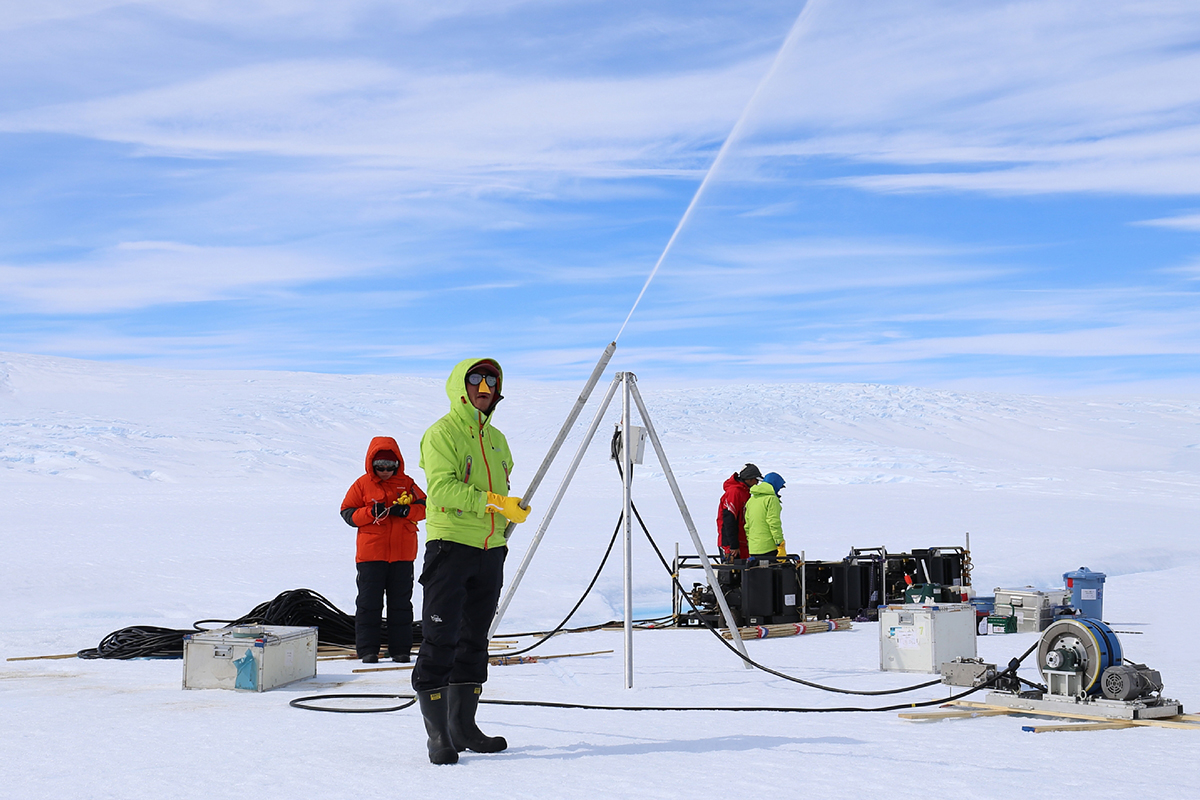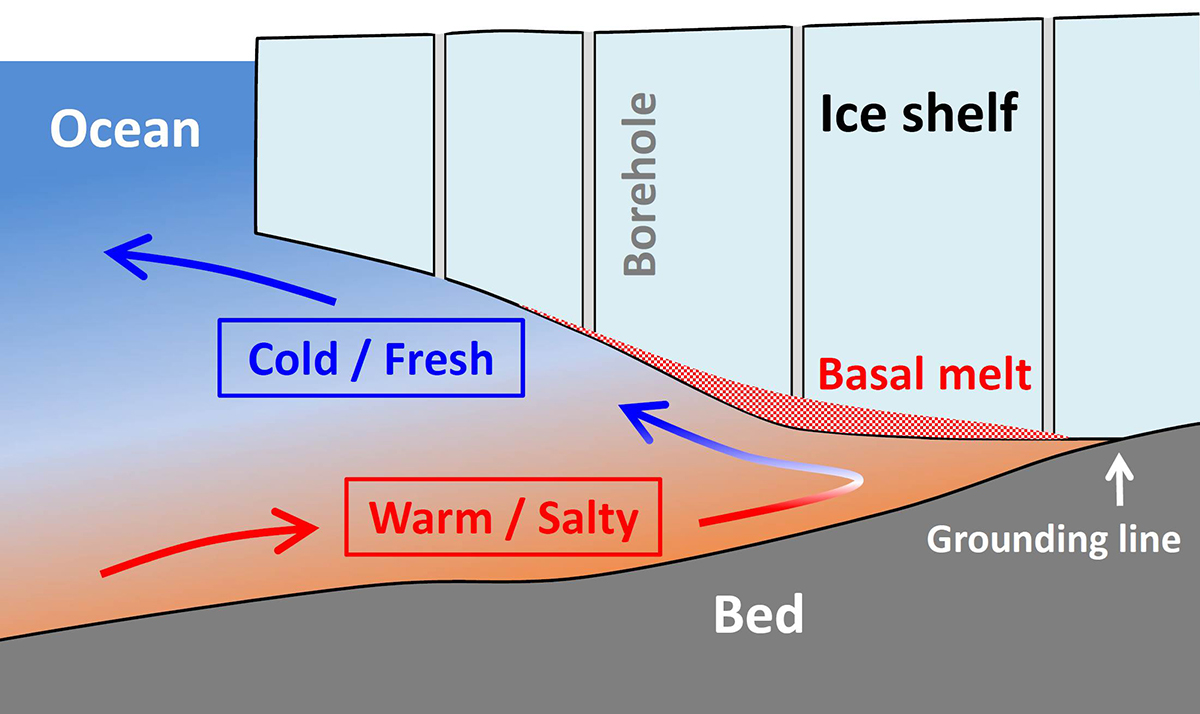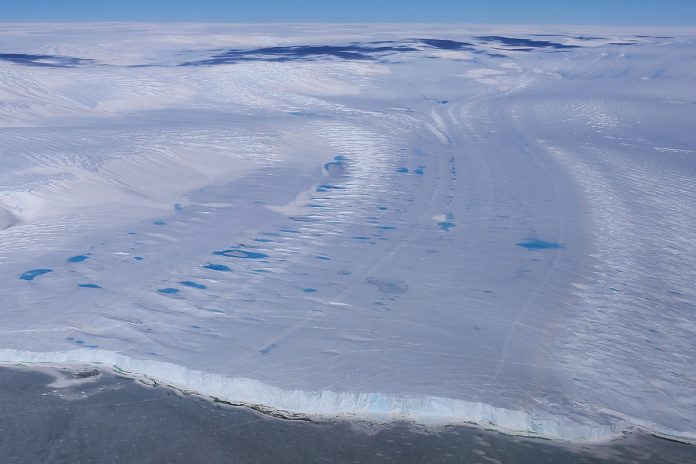Shin Sugiyama, Institute of Low Temperature Science from Hokkaido University provides a fascinating look at the mass loss of the Antarctic ice sheet driven by ice-ocean interaction
The Antarctic ice sheet is the largest ice mass on the earth, holding approximately 10 times greater ice volume than all the other glaciers existing in the world. Observations indicate significant mass loss of the ice sheet, in contrast to previous understanding that such a huge ice mass changes only in a centurial or longer temporal scale. Unlike glaciers melting under the rising temperature in the Arctic and other regions, currently observed ice loss in the Antarctic is driven by the ocean.
Ice-shelf basal melting
The loss of ice is attributed to the processes occurring at ice shelves, marginal parts of the ice sheet floating in the ocean. Ice shelves account for 12% of the ice sheet and its lower surface is exposed to ocean water. Melting at this ice-ocean interface is currently in excess of a balanced condition, which is leading to thinning and retreat of the ice shelves. An excessive amount of ocean heat is supplied to the cavities under the ice shelves because of the changes in ocean temperature and circulation.
Accelerated ice discharge
Shrinking ice shelves are affecting the dynamics of the ice sheet. Observations have shown that glaciers feeding ice shelves are accelerated, resulting in an increase in ice discharge into the ocean and thinning of the inland ice. Reduction in back stress exerted by the ice shelf against the inland ice is suggested as a mechanism of the acceleration. The retreat of the grounding line (the boundary between floating and grounded ice) is another possible link between the melting ice shelf and glacier acceleration.
Langhovde Glacier in East Antarctica
To better understand the physical processes driving the mass loss of the Antarctic ice sheet, we study Langhovde Glacier (Fig. 1), an outlet glacier near Japanese Syowa Station in East Antarctica. Rapid changes are reported in ice shelves and glaciers in West Antarctica and the Antarctic Peninsula, whereas ice in East Antarctica is thought to be more stable. However, lack of observational data hinders projection of East Antarctica, which holds approximately 90% of the ice in Antarctica. Langhovde Glacier is a relatively small Antarctic outlet glacier, which is suitable for in-situ measurements of ice-ocean interactions. For example, seismic sensors operated near the front of the glacier indicated tide-modulated ice motion and seismicity, a strong link between the ocean and ice sheet dynamics (Minowa et al., 2019).

Hot-water drilling
Answers to key questions are hidden under the ice. Basal melting occurs at the base of the ice shelves and heat is supplied by subshelf ocean circulations. Hot-water drilling is a tool to enable direct access and in situ measurements at the subglacial environment. In 2012 and 2018, we used a hot-water system to drill through the 250–400 m thick ice shelf of Langhovde Glacier (Fig. 2). Measurements under the ice revealed temperature and salinity distributions over the entire range of the cavity. Data indicates relatively warm ocean water enters into the deeper region of the cavity, supplies heat for basal melting, and upwells with meltwater along the base of the ice (Fig. 3). Basal melting occurs in the entire region of the ice shelf at rates of several metres per year.

Life under the ice shelf
The subshelf cavity is inhabited by marine animals. A video camera lowered through a borehole captured crustacean, krill, fish and many other species, which form a unique ecosystem in a dark and cold environment (Sugiyama et al., 2014). Active water circulation carries not only heat for melting, but also nutrition for life in the cavity. Further investigation is needed to understand this unexplored ecosystem and the possible impact of melting ice on the habitants under the ice shelf.

References
Minowa, M., et al. (2019), Tide-modulated ice motion and seismicity of a floating glacier tongue in East Antarctica. Annals of Glaciology, 60(79), 57-67, doi:10.1017/aog.2019.25.
Sugiyama, S., et al. (2014), Active water exchange and life near the grounding line of an Antarctic outlet glacier. Earth and Planetary Science Letters, 399C, 52-60, doi: 10.1016/j.epsl.2014.05.001.
This research was performed as a part of the 53rd and 59th Japanese Antarctic Research Expedition with financial support by JSPS KAKENHI 17H06320 and ROBOTICA Project (Research of Ocean-ice Boundary InTeraction and Change around Antarctica).
Please note: This is a commercial profile











